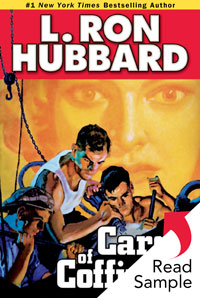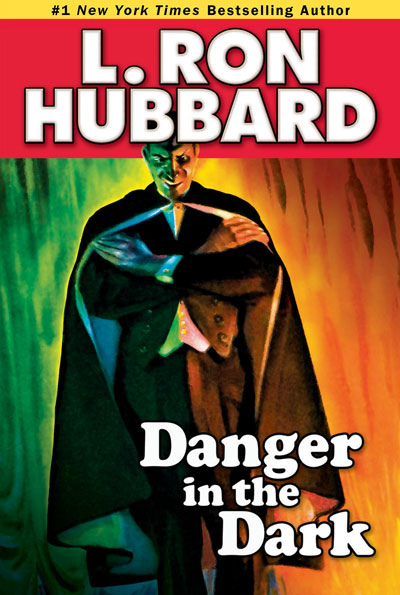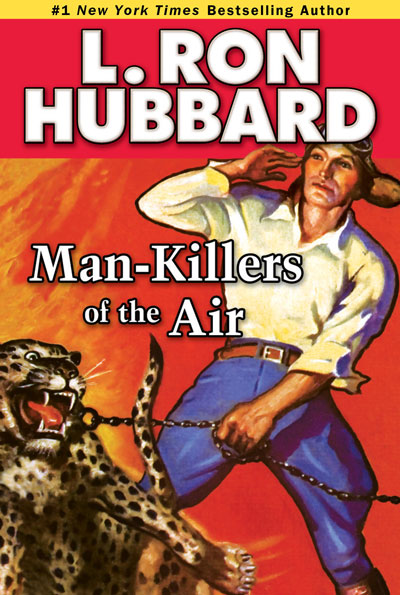Cargo of Coffins Glossary
Stories from the Golden Age reflect the words and expressions used in the 1930s and 1940s, adding unique flavor and authenticity to the tales. While a character’s speech may often reflect regional origins, it also can convey attitudes common in the day. So that readers can better grasp such cultural and historical terms, uncommon words or expressions of the era, the following glossary has been provided.
after well deck: the space on the main deck of a ship lying at a lower level between the bridge and a raised deck at the stern, which usually has cabins underneath.
Alphonse XIII: (1886–1941) king of Spain from 1886–1931.
anchorage: that portion of a harbor, or area outside a harbor, suitable for anchoring, or in which ships are permitted to anchor.
Aragon: a region and former kingdom of northeast Spain.
bales: large bundles or packages prepared for shipping, storage, etc.
bandolier: a broad belt worn over the shoulder by soldiers and having a number of small loops or pockets for holding cartridges.
bearder: one who boldly confronts or challenges (someone formidable).
before the mast: the forward part of the ship, where common sailors have their quarters.
bells: the strokes on a ship’s bell, every half-hour, to mark the passage of time.
benj: (Persian) marijuana; also called bhang; in one of the stories of The Arabian Nights, it is used to drug a wine, producing a deathlike sleep.
Bias Bay: body of water off the coast of China, fifty miles northeast of Hong Kong, and notorious as a base of operations for Chinese pirates.
binnacle: a built-in housing for a ship’s compass.
blackguard: a man who behaves in a dishonorable or contemptible way.
book: (cards) in bridge, the number of tricks (usually six) that a side must win before it can score by winning subsequent tricks.
bridge wing: a narrow walkway extending outward from both sides of a pilothouse to the full width of a ship.
Burma: country in southeast Asia on the Bay of Bengal now known as Myanmar.
Canary Islands: a group of islands off the northwestern coast of Africa belonging to Spain.
Cape Frio: coastal city in Brazil located in the state of Rio de Janeiro.
Carioca Range: a small coastal mountain range running east to west through the city of Rio de Janeiro.
Casablanca: a seaport on the Atlantic coast of Morocco.
Cayenne: a seaport and the capital of French Guiana. It was the location of a French penal settlement from 1854 to 1938 and was known as la guillotine sèche or the dry guillotine. Devil’s Island, another French penal colony at that time, was located nearby.
cayman: a reptile related to the alligator but smaller and slimmer and with a proportionally longer tail. Native to tropical America.
Chinwangtao: port city of northwest China on the Bo Hai Sea, an inlet of the Yellow Sea, 186 miles (300 km) east of Beijing. It was formerly a treaty port where foreign trade was allowed.
clipper: a sailing ship built and rigged for speed, especially a type of three-masted ship. Used in trade winds in which speed was more important than cargo capacity.
coasting: sailing along or near a coast, or running between ports along a coast. A coasting vessel is employed in trade by water between neighboring ports of the same country, as distinguished from foreign trade or trade involving long voyages.
Coast Pilot: official publication giving descriptions of particular sections of a coast and usually sailing directions for coastal navigation.
Cossack jacket: cherkeska; a military coatlike garment with silver cartridges lined across the chest. The cartridges are a reminder of the times when the Cossacks were armed with muzzle-loading guns. At that time, each cartridge contained enough gunpowder for one shot. When breech-loading weapons came into use, the holders were retained as part of the costume.
de Milo: Venus de Milo; famous Greek sculpture of Venus, the goddess of love and beauty.
Devil’s Island: an island in the Caribbean Sea off French Guiana and location of a notorious French penal colony, opened in 1854 and closed in 1946. Used by France, its inmates were everything from political prisoners to the most hardened of thieves and murderers. Conditions were harsh and many prisoners sent there were never seen again. Few convicts ever managed to escape.
dodger: a canvas or wood screen to provide protection from ocean spray on a ship.
drill: a strong, twilled cotton fabric.
dynamo: a machine by which mechanical energy is changed into electrical energy; a generator.
ennui: a feeling of utter weariness and discontent resulting from a lack of interest; boredom.
fidley: an area above ship boilers designed for the intake of fresh air. Fidley grates prevent people or objects from falling into the boiler room.
five-spot: a five-dollar bill.
flotsam: vagrant, usually destitute people.
fo’c’s’le head: forecastle head; the part of the upper deck of a ship at the front. The forecastle is the front of a ship, from the name of the raised castlelike deck on some early sailing vessels, built to overlook and control the enemy’s deck.
French Guiana: a French colony of northeast South America on the Atlantic Ocean, established in the nineteenth century and known for its penal colonies (now closed). Cayenne is the capital and the largest city.
gangway: a narrow, movable platform or ramp forming a bridge by which to board or leave a ship.
Gávea: peak in Rio de Janeiro located by the sea between two beaches and rising 2,762 feet above sea level.
G-men: government men; agents of the Federal Bureau of Investigation.
Grand Banks: shallow section of the Atlantic Ocean off southeastern Canada that is an important fishing region. The mixing of cold and warm water currents and the relative shallowness of the water has made this one of the richest international fishing grounds in the world.
gumshoes: sneakers or rubber overshoes.
hawser: a thick rope or cable for mooring or towing a ship.
hooker: an older vessel, usually a cargo boat.
Hunchback: peak in Rio de Janeiro, on top of which stands the famous statue of Jesus Christ that watches over the city.
Indochina: the former French colonial empire in southeast Asia, including much of the eastern part of the Indochinese peninsula (now Vietnam, Laos and Cambodia). French influence extended from roughly 1862 through 1954.
Jacob’s ladder: a hanging ladder having ropes or chains supporting wooden or metal rungs or steps.
knot: a unit of speed, equal to one nautical mile, or about 1.15 miles, per hour.
lighters: large open flat-bottomed barges, used in loading and unloading ships offshore or in transporting goods for short distances in shallow waters.
Manchukuo: a former state of eastern Asia in Manchuria and eastern Inner Mongolia. In 1932 it was established as a puppet state (a country that is nominally independent, but in reality is under the control of another power) after the Japanese invaded Manchuria in 1931. It was returned to the Chinese government in 1945.
Mannlicher: a type of rifle equipped with a manually operated sliding bolt for loading cartridges for firing, as opposed to the more common rotating bolt of other rifles. Mannlicher rifles were considered reasonably strong and accurate.
Mann-Scho: Mannlicher-Schoenauer; a rifle introduced in 1903 that proved very popular with big-game hunters worldwide. Its main feature was the use of a magazine that automatically rotated the rounds into the feeding position while the gun was being fired.
Mex: Mexican peso; in 1732 it was introduced as a trade coin with China and was so popular that China became one of its principal consumers. Mexico minted and exported pesos to China until 1949. It was issued as both coins and paper money.
milréis: (Portuguese) a former Brazilian monetary unit.
Morocco: a country of northwest Africa on the Mediterranean Sea and the Atlantic Ocean. The French established a protectorate over most of the region in 1912, and in 1956 Morocco achieved independence as a kingdom.
Mt. Cépéron: a mountain in Cayenne, a seaport and the capital of French Guiana. On this mount stands Fort St. Michel, the marine barracks, the signal station and the lighthouse.
peerages: books listing the titles of nobility in various countries, the members of nobility and information about their families.
Pernambuco: state in northeastern Brazil.
Pico: Pico de Papagaio (Parrot’s Peak), a mountain peak located at the mouth of the Guanabara Bay in Rio de Janeiro, Brazil. The bay is flanked by Pico de Papagaio on one side and by Pão de Açúcar (Sugar Loaf) on the other.
pip: something extraordinary of its kind.
put in or put into: to enter a port or harbor, especially for shelter, repairs or provisions.
queer: to ruin or thwart.
salade: a light, late medieval helmet with a brim flaring in the back to protect the neck, sometimes fitted with a visor.
Scheherazade: the female narrator of The Arabian Nights, who during one thousand and one adventurous nights saved her life by entertaining her husband, the king, with stories.
Schoenauer: Mannlicher-Schoenauer; a rifle introduced in 1903 that proved very popular with big-game hunters worldwide. Its main feature was the use of a magazine that automatically rotated the rounds into the feeding position while the gun was being fired.
schooner: a fast sailing ship with at least two masts and with sails set lengthwise.
screw: a ship’s propeller.
set: in the card game of bridge, to defeat an opponent.
Shanghai: city of eastern China at the mouth of the Yangtze River, and the largest city in the country. Shanghai was opened to foreign trade by treaty in 1842 and quickly prospered. France, Great Britain and the United States all held large concessions (rights to use land granted by a government) in the city until the early twentieth century.
“sleeping giant”: the northeast face of the peak Gávea in Rio de Janeiro that has a carving of an ancient face resembling that of the Sphinx in Egypt.
Sparks: radioman; traditionally nicknamed Sparks or Sparky, stemming from the early use of transmitters that produced sparks to radiate energy, the means by which radio signals were transmitted.
SS: steamship.
stanchion: an upright bar, post or frame forming a support or barrier.
Sugar Loaf: Pão de Açúcar (Sugar Loaf), a mountain peak located at the mouth of the Guanabara Bay in Rio de Janeiro, Brazil. Its name is said to refer to its resemblance to the traditional shape of a concentrated refined loaf of sugar. The bay is flanked by Pico de Papagaio (Parrot’s Peak) on one side and by Pão de Açúcar (Sugar Loaf) on the other.
ticket: a certifying document, especially a captain’s or pilot’s license.
transom: transom seat; a kind of bench seat, usually with a locker or drawers underneath.
trick: 1. (cards) in bridge, four cards played in sequence, one by each player at the table in a clockwise rotation. The high card is the winner. 2. a period or turn of duty, as at the helm of a ship.
tricolor: the French national flag, consisting of three equal vertical bands of blue, white and red.
Tropic of Capricorn: southern tropic; one of the five major parallels of latitude, it lies approximately 23½ degrees south of the equator. It marks the most southerly latitude at which the sun can appear directly overhead.
twenty-five-twenty: .25–20; a rifle cartridge approximately .25 inch in diameter, originally having a powder charge of 20 grains, which is the source of its name. This size rifle was used for hunting small game.
weigh anchor: take up the anchor when ready to sail. Also used figuratively.
wing: bridge wing; a narrow walkway extending outward from both sides of a pilothouse to the full width of a ship.












